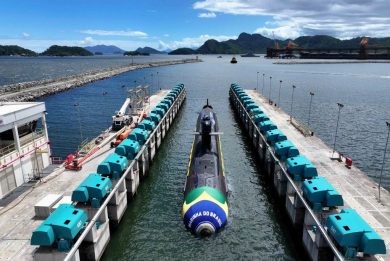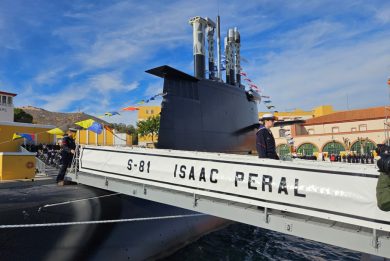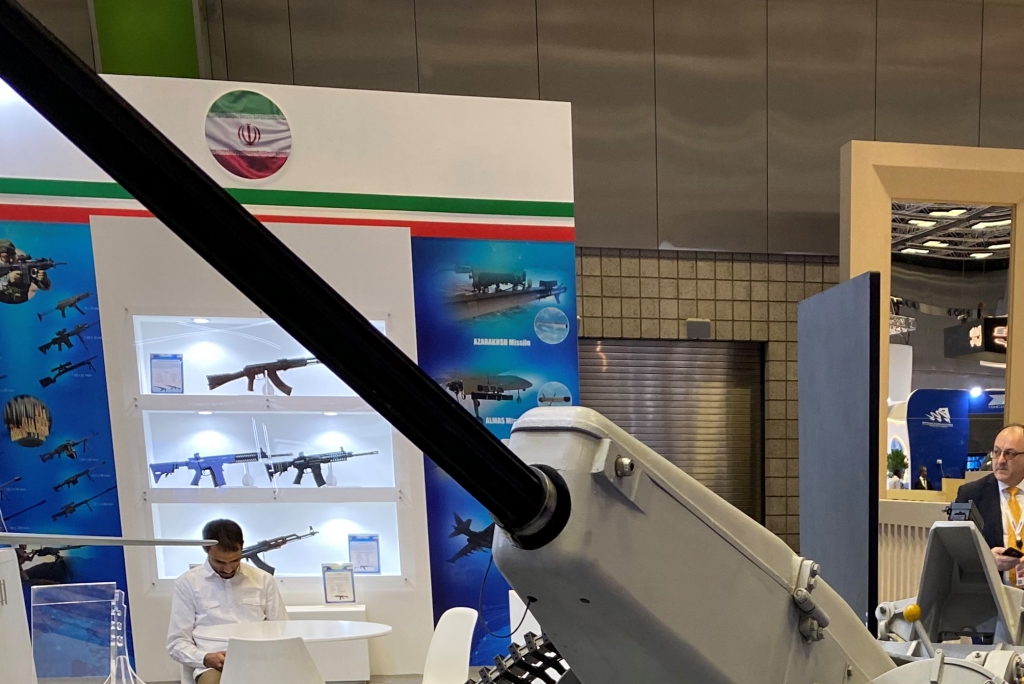
DIMDEX 2024 – The Iranian Defence industry unveils UAS, naval propulsion, radar and weapons
During DIMDEX 2024, the Iranian Ministry of Defence and eight affiliated entities presented a range of products, from the unmanned air systems (UASs) portfolio including the Gaza armed medium-altitude, long endurance (MALE) UAS, sided by the smaller Shahed 129 (M129) and the tactical and smallest M133 models, to the range of naval platforms among which for the first time an air independent propulsion mock-up solution for submarine is shown, passing through a plethora of anti-ship, anti-air and ballistic missiles and rockets, in addition to air-launched, naval and air defence weapons

The most significative were the Gaza MALE UAS and the Fateh submarine with an air independent propulsion module. Although the Gaza was unveiled in May 2021 and completed its flight tests in April 2022 before being delivered to the Islamic Revolutionary Guard Corps, in 2023 the Iranian MOD and industry announced to have developed an improved version, characterized by a new landing gear and underwing hardpoints.
With a wingspan and airframe length of 21 and 10 metres and an height of 4 metres, according to the latest brochure released in Arabic during DIMDEX 2024, the Gaza UAS has a take-off weight of 3,740 kg (no reference to the maximum figure), a basic weight without fuel of 1,740 kg, a maximum fuel capacity of 1,500 kg, alongside a maximum payload of 500 kg. The Gaza is the first Iranian UAS equipped with a 750 hp turboprop engine driving a four-blade propeller, which ensures a maximum and cruising speed of respectively 350 and 190 km/h, a climb rate of 495 metres per minute and a mission altitude of 10,668 metres. The max endurance is indicated as 25 flight hours without specifying the weapon, sensors and fuel payloads.
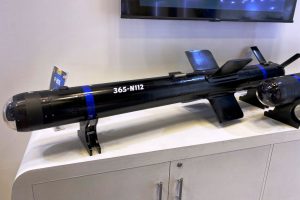
Equipped with a satellite communication antenna and an electro-optic turret under the nose, which was previously indicated as being equipped with a day light camera with significant zoom capabilities, a thermal imager and a laser rangefinder, the Gaza has been presented with two hardpoints under each wing (for a total of four available), the external ones carrying two small F365 air-to-surface missiles each and the internal ones a single guided bomb. Brochure rendering shows four underwings hardpoints each capable of carrying two F365 missiles. Described as a precise offensive weapon that can be effectively used against tanks, fortifications, buildings and armour, the F365 is indicated as a multi-purpose missile (to be used by land and airborne platforms), capable to be used as a ‘fire and forget’ weapon, with low-light and daylight TV cameras, alongside a laser seeker. With a length of 1,600 mm, a 152 mm diameter and four X-shaped main and rear fins, the main ones having a total span of 470 mm (including the missile body), the F365 has a total weight of 39 kg. Equipped with a solid propellant propulsion, it has a maximum speed of 278 m/s and a range between 1 and 10 km. The F365 is fitted with a 9 kg multi-purpose anti-armour and anti-personnel warhead.
No information has been released about an underbelly internal bay, which was showed in 2021 alongside a five stations rotary weapons launcher near to the air vehicle. The Gaza is advertised as being capable to carry up to 13 ordnances.

Under the Gaza armed UAS model we could also see an air-to-surface surveillance radar. According to the datasheet shown near the equipment and the released brochure in Arabic, the Iranian industry has developed a family of two low-weight low-consumption multi-mode radars capable of air-to-ground high-resolution imaging, day and night and in all weather conditions (including snow, rain, fog and smoke), thanks to synthetic aperture radar (SAR) modes alongside ground and maritime moving target indicator mode (GMTI/MMTI). The family comes in two models with real time processing; the more capable (150 km) and heavier (70 kg) S-813 radar with sub-metric SAR resolution imaging capabilities (1, 2 and 3 meters), has a 1-to-10 km swath width mode and a power consumption of 700 watts. The lighter one (40 kg) has a maximum range of 40 km, a SAR resolution of 1 and 2 meters, a 1-5 km swath width and a 500 watts power consumption. Interestingly, a specific reference is made in the brochure to the ISAR (inverted SAR) mode for imaging maritime mobile targets, highlighting the real dual mode capability of the radar. According to the brochure, the radar is being shown in a radome under the smaller Shaded 129 (M129) UAS. The same fitting, with the radar single line replacement unit (LRU) installed internally in the airframe and the antenna in the radome, can be installed on the larger Gaza UAS, reportedly in the underbelly internal bay which was unveiled in 2021.
The Fateh submarine with AIP propulsion module
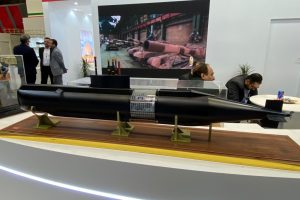
A model of the Fateh class first indigenous full-size submarine was showcased with a transparent plug with equipment that was later identified as an air independent propulsion (AIP) module. EDR On-Line was told by Iranian representatives that this is an AIP system module but no more details were released on the type and programme. The AIP is accommodated in an hull module plug behind the sail ahead the main propulsion section. In addition to this modification, compared to the current Fateh class hull layout, the submarine model was showcasing a different design of the upper part of the hull section in front of the sail as well as a prominent false keel running along the hull bottom.
Based on the relationships with China and Russia and their works in the sector, the AIP is likely a Stirling engine type. Three generator modules were visible in the transparent plug. No evidence was available where the liquid oxygen (LOX) tanks necessary to feed the Stirling system are installed.

EDR On-Line understood an AIP development programme is underway. It is reportedly being carried out by the Malek Ashtar University of Technology (MUT) in Teheran, which has been working on systems and new technology projects in the naval domain for the Iranian MoD since a long time. The MUT is also involved in other power generation research, such as the Fuel Cell, thanks to its Fuel Cell Technology Research Laboratory.
The introduction of an AIP technology will significantly enhance Iranian underwater operational capabilities, notably in endurance but also in acoustic signature reduction.
Photos taken at DIMDEX 2024 by L. Peruzzi

